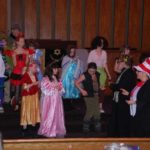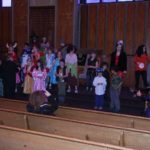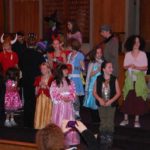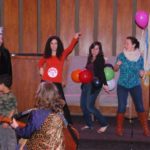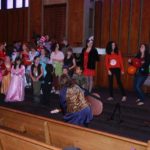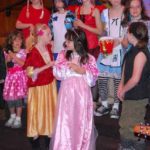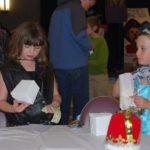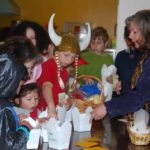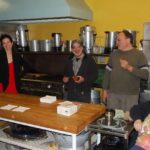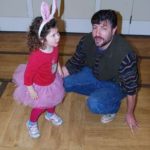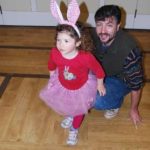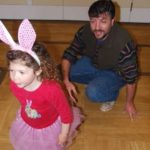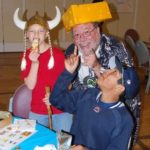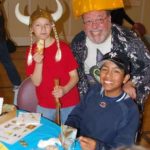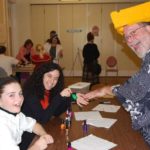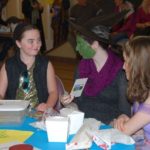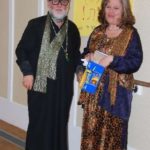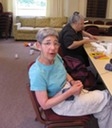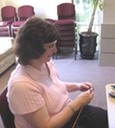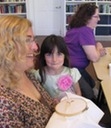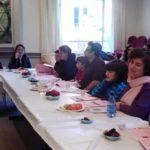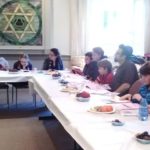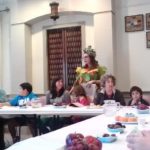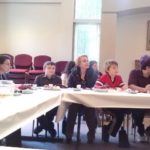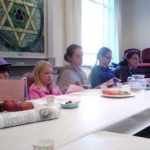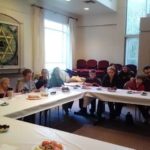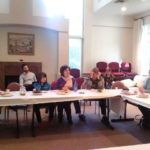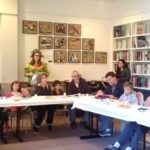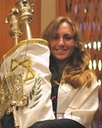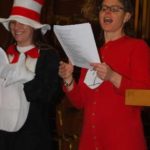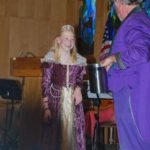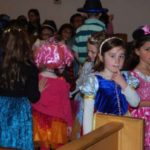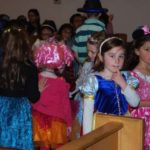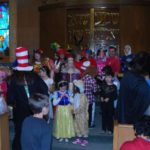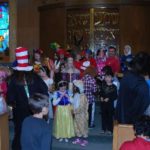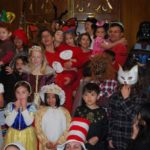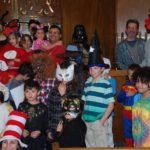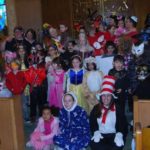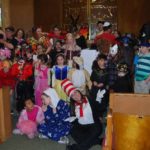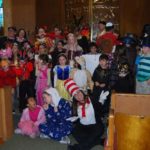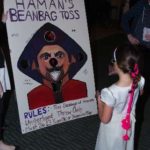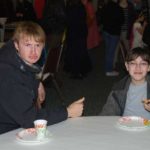urjnetworkadmin
About urjnetworkadmin
Posts by :
Craft & Schmooze
Craft n’ Schmooze
The name of the new Craft n’ Schmooze group says it all. Check out the scene at with these pix from BIJ’s first meeting of Craft ‘n’ Schmooze!
Among the projects done in first meeting was to make cards for the Care & Concern committee to send out. More to follow. If you’re interested in the group, please contact Susanne Raynard or Ann Morgenstern at (415) 586-8833.
Women of the Wall Photo Project
The challenge to promote religious pluralism in Israel is great. One champion is the Women of the Wall (WOW), whose mission is to achieve the social and legal recognition of the right of women to wear prayer shawls, pray, and read from the Torah collectively, out loud at the Western Wall.
The WOW have been verbally abused and physically threatened at monthly Rosh Hodesh services. Members have recently been interrogated and arrested. In response, WOW created a wise and clever campaign to gather 10,000 pictures of women holding Torah scrolls, which will be sent to Israeli government officials by Simhat Torah.
BIJ’s own Sara Heckelman proudly took up the cause at BIJ, and invited Jewish women–temple members and their friends–to be photographed holding a Sefer Torah at a number of times. You can read an article in the J. Weekly about the effort: Local women put focus on campaign for equality at Western Wall.
Here is a photo gallery of BIJ women and friends who participated in the effort.
Join Us In Israel –2016
urjnetworkadmin / Rabbi /
While June 26- July 10, 2016, may seem a distance away, it is not too early to block it out on your calendar and plan to join Ricki and I on our “Jewish Roots Journey to Europe & Israel.” Highlights of the trip include traveling to Warsaw and Krakow Poland to visit the Polin Museum of the History of Polish Jews, Warsaw Ghetto and Okopowa Street Cemetary, Kazmierz Old Jewish Quarter and Krakow Ghetto, Aushwitz/Birkenau Concentration Camps; Prague, Czech Republic to visit the Old Jewish Quarter, Alta-Neu Synagogue, Jewish Cemetary and Prague Jewish Museum, Prague Castle, Wenceslas Square and Charles Bridge, Shabbat at Bejt Simcha Reform Synagogue; Israel to visit Haifa, Acco and Cesaria, meet with Israeli Muslims, Druze and Christians working for Peaceful Co-existenace, Historical Sites in Jerusalem–City of David, Kotel, South Wall Excavation, Christian Quarter, Shabbat in Jerusalem. Estimated land package price per person is $3900. For more information and registration please contact me at 415.586.8833.ext.22 or email me at rabbigottlieb@bij.org.
Past postings regarding our previous trip to Israel are posted below.
*Tishah B’av: A Brief History
urjnetworkadmin / Jewish Holidays /
Tishah B’Av means “Ninth of Av” and refers to a Jewish day of fasting and mourning.
Excerpted from The Jewish Home by Daniel B. Syme. URJ Press
Traditionally Tishah B’Av is the darkest of all days, a time set aside for mourning the destruction of both ancient Temples in Jerusalem. As on Yom Kippur, the fast extends until the following sundown. In the synagogue, the Book of lamentations is changed, as are kinot, dirges written during the Middle Ages. Sitting on low stools, a shivah custom, congregants also read sections of the books of Jeremiah and Job, as well as biblical and talmudic passages dealing with the Temples’ destruction.
Reform Judaism has never assigned a central religious role to the ancient Temple. To the early Reformers, mourning the destruction of the Temple in such elaborate fashion did not seem meaningful, especially since Reform has not idealized the rebuilding of the Temple, as has Jewish tradition. For most Reform Jews, then, 586 b.c.e. and 70 c.e. are important dates in Jewish history, but Tishah B’Av has faded in importance as a ritual observance. In order to understand the mournful nature of Tishah B’Av, then, we must enter the traditional mind as we look back into history.
The First Temple in Jerusalem was constructed during the reign of King Solomon (965 b.c.e.–925 b.c.e.). Solomon’s father, King David, had wished to build the Temple, but was not allowed to do so. The Bible relates that God disqualified David because of his many military campaigns. The Temple was to be a holy place, a place of peace. Therefore, only a king who had not shed blood could bring it into being. Thus, Solomon, whose Hebrew name was Shlomo (from shalom, peace), inherited this sacred task.
Solomon built the First Temple with the assistance of King Hiram of Tyre. Hiram sent his Phoenician artists and builders magnificent stone from his nation’s quarries and the beautiful cedars of Lebanon to aid in the task.
The finished Temple was an awesome structure. Situated on a mountain 2/500 feet high, it had courtyard, a sanctuary, and a small room called the Holy of Holie, entered only once a year by the high priest. It was in the Temple that the kohanim (priests) offered the ancient sacrifices on behalf of the people, assisted by the Levites.
In 586 b.c.e., the Babylonian army surrounded Jerusalem. Led by their general, Bebuchadnezzar, they broke into the city and conquered it. Then, on the Ninth of Av, they destroyed the Temple. The Jews were sent into exile, crushed and despondent. According to some scholars, the prophet Jeremiah, grieving for the Temple, composed Psalm 137, in which he wrote: “By the waters of Babylon, we lay down and wept for thee Zion.” A people who had grounded their entire religious system in a priestly Temple structure suddenly had it torn away from them.
Even as he mourned, Jeremiah still had hope. He told the people that they would one day return to Jerusalem and rebuild the Temple. He was correct. Some sixty years later, Persia conquered Babylonia, and the Persian King Cyrus allowed the Jews to return home. They rebuilt the Temple but it was not nearly as magnificent as Solomon’s Temple had been. Still, the Jews rejoiced, for once again they had an opportunity to be led by their priests and to offer sacrifices in their holiest site. It was this rebuilt Temple that King Antiochus defiled in 168 b.c.e., and which the Maccabees reconsecrated three years later. But the Building of the Second Temple was yet to come.
The Second Temple was enhanced and expanded during the first century b.c.e by King Herod, one of the cruelest rulers in Jewish history. Deciding that the rebuilt Temple was not to his liking, Herod decided to expand it. He partially leveled the previous site, then oversaw the construction of a Temple that rivaled that of Solomon’s in grandeur.
Herod had intended to continually add new structures to the Temple grounds, but the work was never completed. In 70 c.e., Roman legions, led by the General Titus, conquered Jerusalem and destroyed the Temple. It was the Ninth of Av. Once again, the Jews were sent into exile, this time to Rome.
Some historians have expressed doubt that the actual destruction of both Temples occurred on the Ninth of Av, but there is no disputing the fact that the day became a symbol of Jewish tragedy. The synagogue ultimately replaced the Temple. [New forms of worship and religious leadership were created.] But Jew continued to hope and pray that the Temple would be restored. The prayer book and songs expressed this yearning, and Tisha B’Av became a vehicle for expressing that deep sorrow.![]()
Calendar of Jewish Holidays
urjnetworkadmin / Jewish Holidays /
| NOTE: Each holiday begins and ends at sundown on the days listed. | |||||
| Jewish Year | 5772 |
5773 | 5774 | 5775 | 5776 |
| Secular Year | Sep ’11 – Sep ’12 |
Sep ’12 – Sep ’13 |
Sep ’13 – Sep ’14 |
Sep ’14 – Sep ’15 |
Sep ’15 – Sep ’16 |
| S’LICHOT SERVICE | Sep 24 | Sep 8 | Aug 31 | Sep 20 | Sep 5 |
| ROSH HASHANAH |
Sep 28-30 |
Sep 16-18 | Sep 4-6 | Sep 24-26 | Sep 13-15 |
| YOM KIPPUR | Oct 7-8 |
Sep 25-26 |
Sep 13-14 | Oct 3-4 |
Sep 22-23 |
| SUKKOT | Oct 12-19 | Sep 30-Oct 7 | Sep 18-25 | Oct 8-15 | Sep 27-Oct 4 |
| ATZERET – SIMCHAT TORAH |
Oct 19-20 |
Oct 7-8 | Sep 25-26 | Oct 16-17 |
Oct 4-5 |
| CHANUKAH | Dec 20-28 |
Dec 8-16 |
Nov 27-Dec 5 | Dec 16-24 | Dec 6-14 |
| TU BISH’VAT | Feb 7-8 |
Jan 25-26 | Jan 15-16 | Feb 3-4 |
Jan 24-25 |
| PURIM | Mar 7-8 | Feb 23-24 |
Mar 15-16 |
Mar 4-5 | Mar 23-24 |
| PASSOVER | Apr 6-13 |
Mar 25-Apr 1 | Apr 14-21 |
Apr 3-10 |
Apr 22-29 |
| YOM HASHOAH | Apr 18-19 | Apr 6-7 | Apr 26-27 | Apr 15-16 | May 4-5 |
| YOM HAZIKARON |
Apr 24-25 | Apr 14-15 | May 4-5 |
Apr 21-22 |
May 10-11 |
| YOM HAATZMA-UT |
Apr 25-26 |
Apr 15-16 | May 5-6 |
Apr 22-23 |
May 11-12 |
| LAG BA’OMER |
May 9-10 |
Apr 27-28 | May 17-18 | May 6-7 | May 25-26 |
| SHAVUOT | May 26-27 |
May 14-15 | Jun 3-4 | May 23-24 |
Jun 11-12 |
| TISHAH B’AV |
Jul 28-29 |
Jul 15-16 |
Aug 5-6 | Jul 25-26 |
Aug 13-14 |
| NOTE: Each holiday begins and ends at sundown on the days listed. | |||||
Glossary of Words and Terms for Jewish Living
urjnetworkadmin / Interfaith Family Resources /
Judaism is more than just a religion: it’s a culture, a language, a way of life. And, integrated fully into these Jewish traditions are unique words and sayings. Though words may have different roots or origins (Hebrew, Yiddish, German), their meanings are universal throughout the Jewish community. This glossary introduces some of the more common sayings appropriate for lifestyle and holiday events.
Berachah (pl. Berachot) – Blessing.
Shehecheyanu – Literally: “[God] who has kept us alive”.This is the blessing for beginnings, happy occasions. It is also said at candle-lighting, Kiddush, and at certain other specific times during festival observance.
B’rit Milah – Covenant of circumcision, traditionally performed on the eighth day of a boy’s life.
Mohel – Highly skilled ritual circumciser.
Kvater/Kvaterin– Godfather/Godmother: those who carry the baby into the b’rit ceremony
Sandak – Person who holds the baby during the ceremony.
Seudat Mitzvah – A festive meal which honors the observance of a mitzvah.
Mi Sheberach – Literally: “May the One who blessed”. A prayer usually, but not solely, recited after a person has been honored with a Torah blessing. There are various forms of this prayer, one of which is used to name a child.
B’rit HaChayim – Literally: “covenant of life”. A home ceremony for the naming of baby girls.
Pidyon Haben/Habat – Literally: “redemption of the (first-born) son/daughter.”Home ceremony which takes place on the thirty-first day of a child’s life.
Kiddush Pe’ter Rechem – Modern ceremony celebrating the birth of the first child.
Ken Ayin Hara (Kinna Hurra) – Literally: “against the evil eye.”
Chanukah – Literally: dedication.
Chanukat HaBayit – Literally: dedication of the house.Ceremonial hanging of the mezuzah.
Menorah – Seven- or eight-branched candelabra. Most commonly used to refer to the eight-branched Chanukah lamp.
Chanukiah – Eight-branched Chanukah menorah.
Gelt – Yiddish word for “money”; given as a Chanukah present, used for playing dreidel.
Dreidel – Yiddish for “top”; used in Chanukah game. Known in Hebrew as “sevivon“.
Nes Gadol Hayah Sham – Literally: “A great miracle happened there.”First letters of these four words are found on the dreidel.
Latke – Yiddish word for “pancake”. Potato latkes are traditionally eaten on Chanukah.
Sufganiyot– Jelly doughnuts served in Israel on Chanukah.
Ger/Gioret – “One who is invited to join the Hebrew tribe.”The masculine and feminine forms of the Hebrew term for convert.
Gerut – Conversion.
Halachah – Jewish Law.
Kabbalat Ol Mitzvot– Literally: “acceptance of the yoke if the commandments.”
Tevilah – Immersion in a ritual bath (mikveh) or any natural body of water which can serve as a mikveh.
Gan Eden – Literally: Garden of Eden; paradise.
Gehinom – Literally: Valley of Hinom; place of punishment.
Kevod HaMet – Honor due to the dead.
Taharah – Ritual purification.
Tachrichim – Burial shrouds.
Chevrah Kadisha – Group of people entrusted with the mitzvah of preparing the body for burial.
El Malei Rachamim – Literally: “God, full of compassion”; memorial prayer.
Keriah – Tearing of a garment or a ribbon as an expression of grief.
Shivah – Seven-day mourning period beginning with the burial.
Sheloshim – Thirty-day mourning period.
Unveiling – Dedication of the grave marker.
Yahrzeit– Anniversary of the death.
Kaddish – Prayer praising God. There are several Kaddish prayers recited during the service, one of which is recited in memory of the departed.
Yizkor – Memorial services held on Yom Kippur and on the last day of Pesach, Shavout, and Sukot.
Seudat Havra’ah – Literally: meal of condolence; prepared by the friends of the mourners.
Mitzvah – Commandment; obligatory responses to our Jewish traditions.
Minyan – Quorum of ten people necessary for public prayer.
Tzedakah – Literally: justice, righteousness; the Hebrew word we use for charity.
Bar/Bat (Bas) Mitzvah – Ceremony marking youngster’s reaching the age of religious majority.
Haftarah – Selection from the Prophets read or chanted after the weekly Torah portion.
Talit (Talis) – Prayer shawl.
Hebrew School – After-school Hebrew classes.
Sunday School – Classes in history, customs, and ceremonies.
Religious School – Term that includes both Sunday school and Hebrew school, though in some synagogues it refers to only Sunday school. Sometimes Religious school is referred to as Torah school.
Cheder – Old-fashioned term for Hebrew school. In Eastern Europe, it was the primary school.
Shabbaton (pl. Shabbatonim) – A Sabbath program of study and celebration.
Kallah (pl. Kallot) – A conclave or retreat.
Chavurah (pl. Chavurot) – Informal group which meets together for study and celebration.
Ulpan (pl. Ulpanim) – Intensive Hebrew course.
MARRIAGE & HOME
Kiddushin – Marriage.
Ketubah (pl. Ketubot) – Marriage contract.
Chatan – Groom.
Kalah – Bride.
Chuppah – Canopy; it can be a talit, velvet or silk canopy, or floral arrangement.
Ring – Traditionally it is solid, without stones.
“Harei at mekudeshet li betaba’at zo kedat Mosheh v’Yisrael”– Literally: “Behold you are consecrated unto me, with this ring, according to the Law of Moses and Israel.” This is the Hebrew nuptial formula.
Sheva Berachot – Seven traditional blessings recited or chanted after the exchange of rings.
Kiddush Cup – For wine, which is drunk after the Sheva Berachot.
Glass to Break – There are various interpretations of the symbolism. The traditional explanation is that the glass is broken in memory of the destruction of the Temple.
Yichud – Time spent alone together by the bride and groom immediately after the wedding ceremony.
Aufruf – Calling up of the bridegroom for Torah blessings on the Shabbat preceding the wedding.
Mikveh – Ritual bath traditionally visited by the bride prior to the wedding.
Fasting – Bridal couple traditionally fasts on the wedding day prior to the ceremony.
Get – Religious divorce.
Chanukat HaBayit– Literally: dedication of the house.
Mezuzah – Ritual object consisting of a casing and a klaf (scroll) which is put on the doorpost(s) of the house.
Klaf – Handwritten mezuzah scroll containing Deuteronomy 6:4-9, 11:13-21.
Pushke – Tzedakah box.
Kosher – Ritually fit.
Trefe – Literally: torn apart; food that is not ritually fit. It is the opposite of kosher.
Parve – Containing neither meat/meat derivatives nor milk/milk derivatives and which can be eaten with either milk or meat meals, e.g., fruits, vegetables, eggs.
Milchig – Foods derived from milk or milk products.
Fleishig – Foods derived from meat or meat products.
Pesach – Passover.
Seder – Literally: order; refers to program of prayers and rituals for the home celebration.
Haggadah (pl. Haggadot) – Literally: telling.It is our duty to tell the story of Passover, particularly to the children.
Matzah – The unleavened bread eaten in recollection of the hurried departure from Egypt. The eating of matzah is obligatory only at the seder. During the rest of Pesach, one may abstain from matzah as long as all chamets is avoided.
Chamets – Leavened bread and anything made with wheat, rye, barley, oats, and spelt unless supervised to ensure that it has not leavened.
The Four Cups – Each has a specific place in the service. The first serves as the Kiddush; the second is taken at the conclusion of the first part of the seder; the third is the cup marking the conclusion of the grace after the meal; the fourth cup comes at the conclusion of the seder. The four cups are said to refer to the promises of redemption made by God to Israel.
The Four Questions – Questions asked at the seder. The answers to the questions form the rest of the Haggadah.
The Cup of Elijah – Elijah is the herald of the Messianic Era when justice and peace will be realized.
Karpas – A green herb such as parsley or a green vegetable such as celery or watercress. It symbolizes spring.
Maror – The bitter herbs such as horseradish symbolizing the bitter plight of the enslaved Israelites.
Charoset – A mixture of fruits, nuts, and wine. Its color and consistency is a reminder of the bricks and mortar used by the Israelite slaves.
Shank Bone – Symbolic of the paschal sacrifice.
Egg – Represents the additional Passover festive offering, the “chagigah,” in the Temple.
Afikoman – A Greek word meaning “dessert.” We make the matzah the official dessert of the seder meal. To keep the children alert during the seder, the afikoman is hidden. The children find it and the leader of the seder must redeem it.
Opening the Door – We open the door to welcome symbolically the prophet Elijah.
Ma’ot Chitim – Literally: wheat money; money collected prior to Passover to assist the needy to celebrate the holiday.
Shabbat HaGadol– Literally: the Great Sabbath preceding Passover.
Purim – Literally: lots.
Megillah (pl. Megillot) – Literally: scroll. There are five megillot in the Bible. The one read on Purim is Megillat Esther.
Grogger – Noisemaker used to drown out Haman’s name.
Purim Schpiel – Humorous play put on at Purim.
Shabbat Zachor– The Shabbat immediately preceding Purim. Its name is taken from the additional Torah portion read that day- Deuteronomy 25:17-19 – which begins with the word “zachor” (remember).
Mishlo’ach Manot– Sending portions of food to friends to celebrate the holiday; also referred to as “Shalach Monos“.
Hamantashen – Filled three-cornered pastries supposed to represent Haman’s hat.
Rosh Hashanah – Literally: the “head of the year”; the New Year.
High Holy Days – Rosh Hashanah and Yom Kippur. Also known as the “High Holidays” or “the Holidays”.
Shofar – Ram’s horn.
Chet – Literally: “missing the mark”; a Hebrew term for sin.
Teshuvah – Literally: “returning”; a Hebrew term for repentance.
Selichot – Penitential prayers.
Tashlich – Traditional ceremony in which individuals symbolically cast their sins into a body of water.
L’Shanah Tovah Tikatevu – New Year greeting meaning “May you be inscribed (in the Book of Life) for a good year,” sometimes shortened to “Shanah Tovah“.
Yom Tov – Literally: “a good day”.The term has come to mean “holiday”. It is often pronounced Yuntiff and the standard holiday greeting is “Good Yuntiff”.
Gemar Chatimah Tovah – Literally: “May you finally be inscribed (in the Book of Life) for good”. After Rosh Hashanah and through Yom Kippur, this greeting is used.
Machzor – High Holy Day prayer book.
Shabbat – Sabbath.
Shabbos – Yiddish and Ashkenazic Hebrew pronunciation for the Sabbath.
Kodesh – Holy.
Kavanah – Intention.
Mitzvah – Commandments.
Minyan – Quorum of ten necessary for public worship.
Challah – Braided egg bread, for Shabbat and festivals.
Kiddush – Blessing recited or chanted over wine, emphasizing the holiness of Shabbat and festivals.
Tzedakah Box (Pushke in Yiddish) – Container for collecting money for charitable purposes. It is customary to give tzedakah prior to candlelighting in the home.
Havdalah – Literally: separation. Ceremony on Saturday night, dividing the Sabbath from the beginning of the week.
Shavuot – Literally: “weeks”. This festival occurs seven weeks after Pesach.
Confirmation – Ceremony marking completion of the religious school courses, often held on Shavuot.
Blintzes – Cheese- or fruit-filled crepes.
Simchat Torah – Literally: “Joy of the Torah.”Holiday marking the conclusion of the yearly cycle of Torah readings and the beginning of the new cycle.
Torah – Literally: “teaching.”In a narrow sense it is the Five Books of Moses, hand-written on a parchment scroll. In a broad sense, it is everything which flows from this (i.e. Judaism).
TaNaCH – Acronym for Torah, Nevi’im (Prophets), and Ketuvim (Writings)- the three sections of the Hebrew Bible.
Bimah – The raised platform in the synagogue where the Torah is read.
Aliyah -Literally: “going up”; the honor of being called to recite the blessings over the Torah.
Parashah – The weekly Torah portion.
Shemini Atseret – Literally: “the eighth day of assembly”; conclusion of Sukot.
Hakafah (pl. Hakafot)– Torah procession(s) around the sanctuary.
Sukkot – Feast of Booths. Name of one of the Three Pilgrimage Festivals.
Sukah (pl. Sukot) – Booths, hut, or tabernacle covered with branches and decorated with hanging fruit, vegetables, and other decorations.
Ushpizin – Mythic guests invited to the sukkah.
Lulav– Palm branch, with myrtle and willow sprigs attached.
Etrog – Citron.
Hakafah (pl. Hakafot) – Procession, circling the sanctuary with the Torah.
Yom HaAtzma-ut – Literally: “Day of Independence”; Israeli Independence Day.
Diaspora – Jewish communities outside of Israel.
Galut – Exile.
Zionism – The belief that there should be a Jewish homeland in Zion (Israel).
Yom HaShoah – Literally: “Holocaust Day.” A day set aside to remember the Holocaust and to honor the memory of those who perished.Shtetl (pl. Shtetlach) – A small Jewish village in Eastern Europe.
Yiddish – Judeo-German; the everyday language of the Jews of Eastern Europe.
Mamaloshen – Literally: “mother language”; affectionate term for Yiddish.
Pogrom – Organized attach on the Jewish community.
Anti-Semitism – An irrational hatred of Jews.
YOM KIPPURYom Kippur – Day of Atonement.
Shabbat Shuvah – Sabbath of Return, between Rosh Hashanah and Yom Kippur. It gets its name from its haftarah which begins “Shuvah Yisrael, Return, O Israel” (Hosea 14:2).
Kol Nidrei – Literally: all vows. Opening prayer for Yom Kippur eve.
Yizkor – Memorial service recited on Yom Kippur, as well as the last days of Sukot, Pesach, and Shavuot.
Yahrzheit Candle – Memorial candle lit on the anniversary of a loved one’s death and also on those days when Yizkor is recited.
Find more interfaith family resources on the Union’s Department of Outreach and Membershipwebsite.
Becoming a Jew
urjnetworkadmin / Interfaith Family Resources /
A pamphlet that answers basic questions about conversion in an easily accessible question and answer format.


